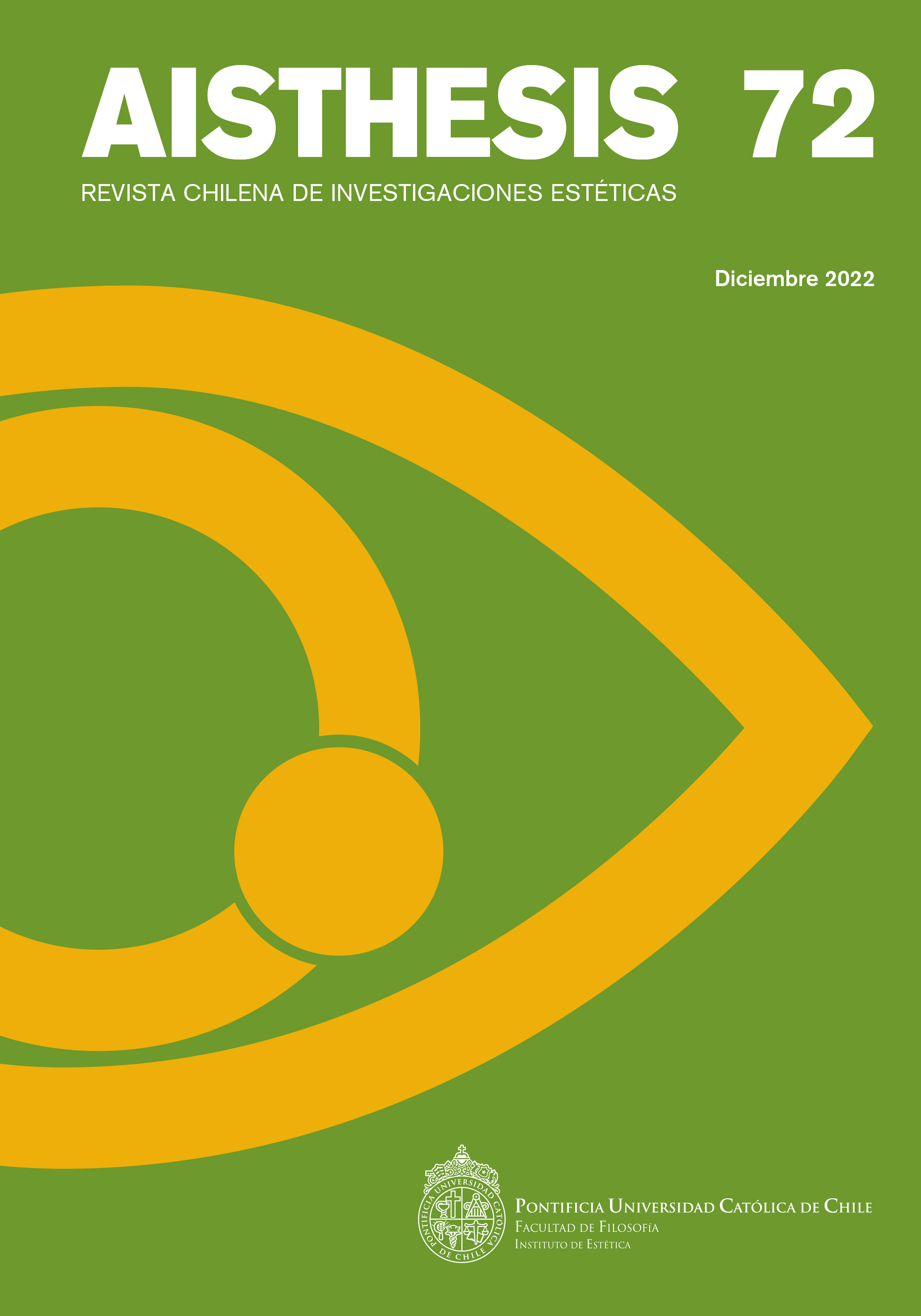Caminando por un mito dibujado de Clorindo Testa. La peste en Ceppaloni (1977-1997) y la ecología Inmersiones en un mito dibujado
Contenido principal del artículo
Resumen
Este artículo propone una interpretación amplificada de la serie La Peste en Ceppaloni (1977-1997) del artista-arquitecto ítalo argentino Clorindo Testa: un conjunto de mapas, dibujos y murales que trabaja en torno a la incidencia de los problemas ecológicos en la condición humana y su hábitat. El texto plantea en su desarrollo una triple aproximación a la obra: la narrativa-visual, la arqueológica y la antropológica. Desciframos la estructura de mito dibujado que se desarrolla en el Medievo en la ciudad italiana de Ceppaloni, de donde procede la familia de Testa, y el rol de sus protagonistas: roedores, “untadores”, el propio arquitecto, la villa medieval y su castillo, así como el itinerario de la peste negra durante el siglo xiv. Esta serie tiene un correlato en el trabajo de este autor que recupera la figuración para recobrar una idea de humanismo. En su manifiesto creativo; arte, arquitectura y ecología cohabitan. Testa simultanea en esta serie lo popular y lo erudito con múltiples técnicas. La síntesis resultante forma parte del imaginario de la sociedad. Los dos relatos de la obra —la plaga y el deterioro ecológico— coexisten actualmente, y por ello resulta sugestiva su revisión en una suerte de exaltación del presente.
Descargas
Detalles del artículo

Esta obra está bajo una licencia internacional Creative Commons Atribución-NoComercial-CompartirIgual 4.0.
Todos los contenidos de esta edición electrónica se distribuyen bajo licencia Creative Commons de “Atribución-Copartirigual 4.0 Internacional” (CC-BY-SA). Cualquier reproducción total o parcial del material deberá citar su procedencia.
Los derechos de los trabajos académicos publicados en AISTHESIS: Revista Chilena de Investigaciones Estéticas pertenecen a sus autores, quienes otorgan a la Revista la licencia para su uso. La gestión de los permisos y la autorización de publicación de las imágenes (o de cualquier material) que contenga derechos de autor y sus consecuentes derechos de reproducción en esta publicación es de exclusiva responsabilidad de los autores de los artículos.
Citas
Boccaccio, G. (1990). Decameron. Madrid: Siruela, 17-18.
Camus, A. (2002). La Peste. Barcelona: Edhasa.
Cartier, M. (1978). El Arte Ecológico. Material de prensa de La Galería, Buenos Aires. https://www.galeriajacquesmartinez.com/es/events/55/la-peste-en-ceppaloni
Gargantilla, P. (2018). La peste. La epidemia que mantuvo en jaque a Europa. Clío. Revista de historia 197, 20-27.
Testa, C. (1978) Multiplicidades de Clorindo Testa. La Peste como motivo visual. La Opinión.
Testa, C. (1991) La serie de la Peste. Ruth Bezacar. Galería de Arte. Feria internacional de Arte Contemporáneo ARCO: Madrid.
Dwyer, J. (2017) The dawning of environmental consciousness in the United States during the 1960s.
Elders, F. (1974). La naturaleza humana: justicia versus poder. Un debate. Noam Chomsky y Michel Foucault. Katz, Buenos Aires.
Fontán, M. (2016). Lo nunca antes visto. Madrid: Fundación Juan March.
Giménez, C. (2019). El arquitecto-artista y su biógrafo crítico. Clorindo Testa y Jorge Glusberg: una relación perdurable. Instituto de Arte Americano e Investigaciones Estéticas, Seminario de Crítica, 231.
Glusberg, J. (1978). Clorindo Testa. La peste en Ceppaloni. Buenos Aires: Centro de arte y comunicación.
Glusberg, J. (1998). El fin de siglo en una mordaz parábola de Clorindo Testa.
Guardiola, I. (2019). El superávit visual. El Mundo. 15/03/2019.
Leporini, N. (2015). The Transculturation of Mythic Archetypes: Margaret Atwood’s Circe. Amaltea. Revista De mitocrítica, 7, 37-55. https://doi.org/10.5209/rev_AMAL.2015.v7.48348
Linares, M. (2000). Europa después de la lluvia. El Cultural < https://elcultural.com/Max-Ernst> [última consulta el 12/02/2021].
Lozano, M. (1987). Las paráfrasis plásticas de Wolf Vostell. Los Barruecos 51, 251-276.
Marcos, M. (2017). Apolo y Dionisos en la arquitectura argentina. En Revista de arquitectura. Museo de Arquitectura y Diseño de la Sociedad Central de Arquitectos, 113 (259), Buenos Aires.
Redfield, Robert. (1960) The Little Community and Peasant Society and Culture. The University of Chicago Press, Chicago.
R.M-C. (1978). El visitante inexorable.
Traba, Marta. (1999) Conversación al sur. Madrid: Siglo XXI.
Un arquitecto múltiple. La peste como motivo visual (s.f.). La Opinión.
Whitelow, G. (1964) Tres aspectos de la pintura argentina actual. En Pintura argentina. Exh. cat.: Rosario.
